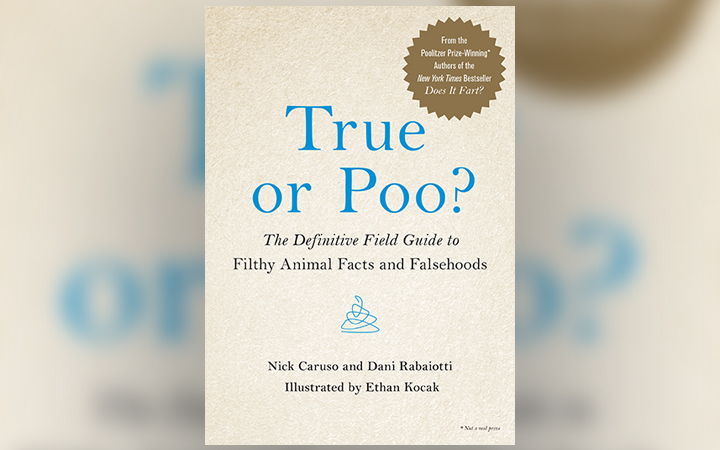'Does it Fart?' Authors Drop Book Number Two, 'True or Poo?'

Animals can do amazing things, many of which are, admittedly, a little disgusting (OK, maybe more than a little). Some eat their young's poop or chew their way out of their mothers' bodies. Others battle prospective mates with their genitals or attack enemies with slime jets shot from their faces.
But there are also weird tales about animal achievements that are more myth than fact, such as the idea that earthworms grow into two new individual worms when they're cut in half, or that camels store water in their humps.
Clearly, there are plenty of odd animal stories that are ripe for cataloging or debunking. And who better to do that than Nick Caruso and Dani Rabaiotti, biologist authors of the lighthearted science bestseller "Does It Fart?" (Hachette Books, 2018). In their new book "True or Poo? The Definitive Field Guide to Filthy Animal Facts and Falsehoods" (Hachette Books, Oct. 23, 2018), they explore a wider range of riveting animal repulsiveness. [8 Bizarre Animal Surprises From 'True or Poo' — Can You Tell Fact From Myth?]
In "Does It Fart?" Caruso and Rabaiotti tackled burning questions about animals and the gas they pass, charmingly illustrated by Ethan Kocak. The runaway success of the book surprised them, but it also demonstrated that there was an audience for their humorous perspective on animals' most disgusting habits, while at the same time addressing common misconceptions about animals, Rabaiotti told Live Science.
"We were thinking, 'People really like farts, and people really like gross animal stories.' We kind of realized there was a big appetite for that," she said.
The new book, also illustrated by Kocak, takes on gross facts and unbelievable claims, clarifying if they are "true" or "poo." Rabaiotti and Caruso compiled a list of myths and facts from scientists on Twitter; researchers shared the strangest and nastiest traits and habits in the animals they studied, and also noted widespread mistakes about animals that were ripe for debunking.
Along the way, the authors learned a few things that stood out as exceptionally bizarre.
Get the world’s most fascinating discoveries delivered straight to your inbox.
"One that really weirded me out is that platypuses don't have stomachs," Rabaiotti said. "I was not aware of that!"
Caruso was similarly surprised by the discovery that carnivorous pitcher plants, which can trap and digest small mammals, are used by certain types of shrews as a toilet.
While there's no shortage of humor in "True or Poo?" there are also important lessons about the wide range of odd adaptations that enable animals to survive. Many readers will likely pick up the book for the gross-outs, but they may come away from it with a new appreciation for unusual animals — even if they think those animals are "scary or weird," Caruso said.
"I'd also like people to realize that some of the really cute animals do really gross stuff, and some of the animals that we think are gross do some really cute stuff," Rabaiotti said.
Originally published on Live Science.

Mindy Weisberger is a science journalist and author of "Rise of the Zombie Bugs: The Surprising Science of Parasitic Mind-Control" (Hopkins Press). She formerly edited for Scholastic and was a channel editor and senior writer for Live Science. She has reported on general science, covering climate change, paleontology, biology and space. Mindy studied film at Columbia University; prior to LS, she produced, wrote and directed media for the American Museum of Natural History in NYC. Her videos about dinosaurs, astrophysics, biodiversity and evolution appear in museums and science centers worldwide, earning awards such as the CINE Golden Eagle and the Communicator Award of Excellence. Her writing has also appeared in Scientific American, The Washington Post, How It Works Magazine and CNN.


